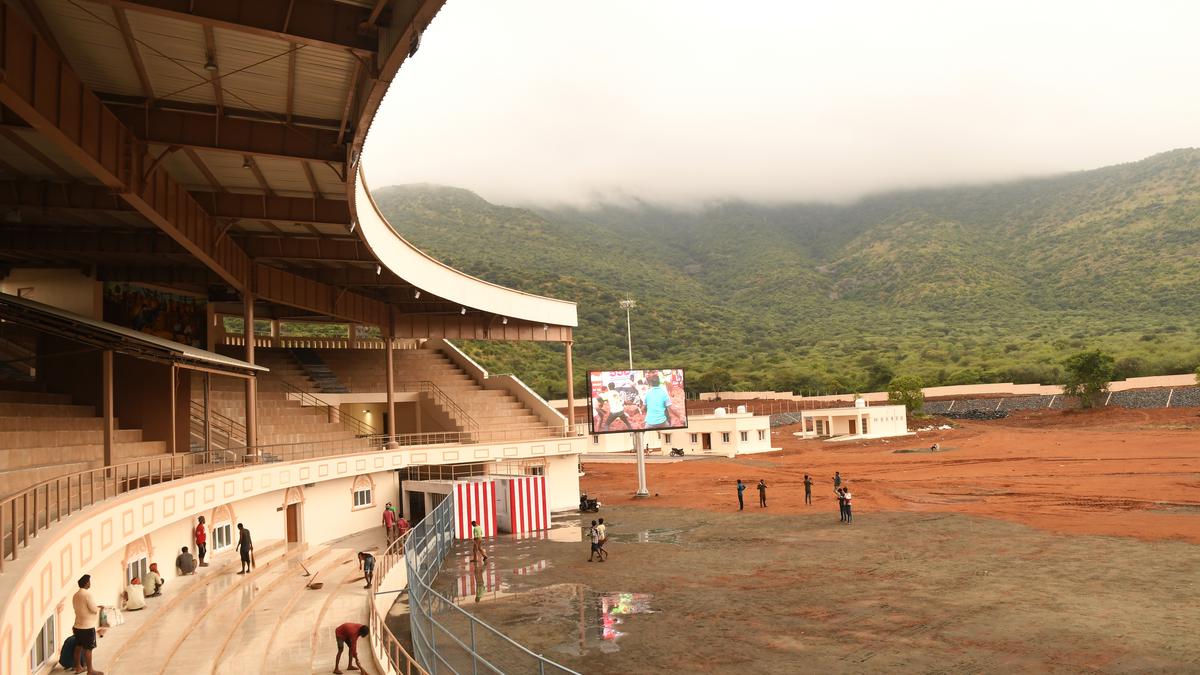
Near Alanganallur, a modern jallikattu arena promises to be the new home of the sport
The Hindu
Near Alanganallur, a modern jallikattu arena promises to be the new home of the sport
Jallikattu, considered one of the traditional sports of Tamil Nadu, is also a cultural identity. In the sport, the arena, especially the ‘vaadivasal’ (the space through which the bull enters the field to face the players), holds significant importance. In places that have become synonymous with the sport, like Alanganallur and Palamedu in Madurai district, the arenas where jallikattu has been held for centuries are located near temples, and they hold a lot of sentimental value for the locals. Besides, the uniqueness of the arenas lends a distinct flavour to the sport.
If the smaller enclosure at Alanganallur makes the sport more spectacular, the vast arena on a river bed at Palamedu makes it difficult for the players to win since the bulls can run away easily.
The popularity of the sport surged after the mass protests across the State in 2017, which resulted in the enactment of a special legislation to overcome the Supreme Court-imposed ban on the sport. Although the sport is unique and intertwined with the local customs and culture, the arenas lacked modern amenities and the capacity to take in more visitors.
Recognising this, the Tamil Nadu government in 2022 announced a new arena in Madurai district. The construction of the arena at Keelakarai near Alanganallur is almost complete. The arena is ready to be opened soon. The arena, constructed on an area sprawling 16 acres in a picturesque location on the foothills of Vaithumalai, has many state-of-the-art facilities for the bull tamers and the bulls, officials say.
The ground floor, measuring 27,534 square feet, has ‘vaadivasal,’ administration office, emergency treatment room, media room, bull registration room, museum, changing room, stalls, lockers and dormitories. The first floor (16,921 square feet) has a VIP suite and lounge, pantry and dormitories and the second floor (9,020 square feet) is equipped with a store and equipment room. The viewers’ gallery would have 3,700 seats in two floors. The arena will also have other facilities, including a bull shed, bull barn and veterinary hospital.
A museum on the premises will showcase photographs, sculptures, paintings, and drawings on jallikattu. The art curator of the museum, who did not want to be named, said the idea was to educate the visitor with details of the sport, starting from its history to the techniques followed. “We have curated the photographs of how bulls starting from the ancient period were domesticated, mentions of ‘Earu Thaluvuthal’ [old name for the sport] in the Sangam literature, ancient coins, terracotta, vintage photographs of the sport and photographs depicting the emotional connect of the people with the sport,” he said.
In addition to this, sculptures (hero stones) based on evidence about the persons who lost their lives fighting for their villages for various causes, who the local residents consider as martyrs, and about the people who lost their life in the sport, were also being displayed.













